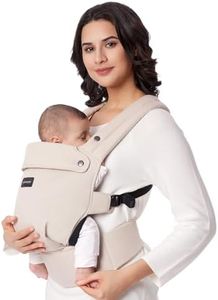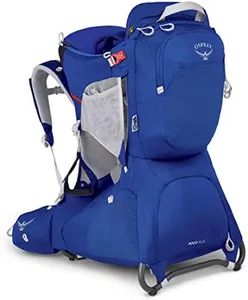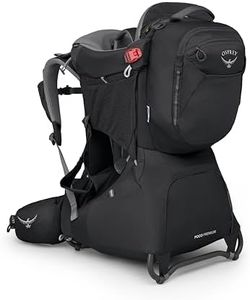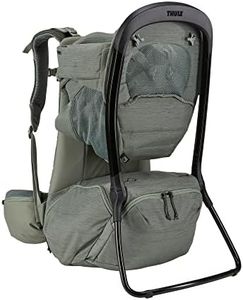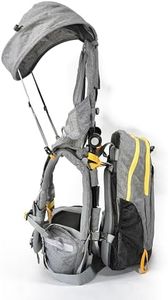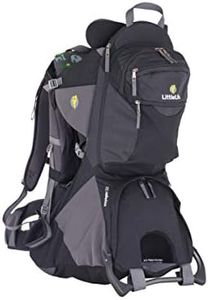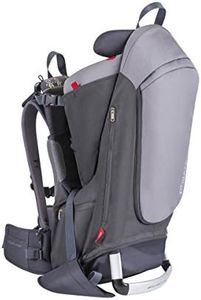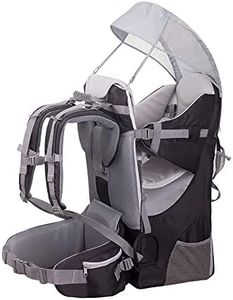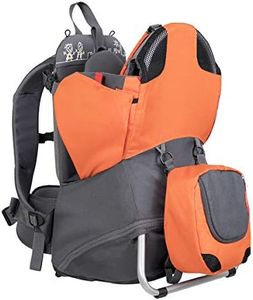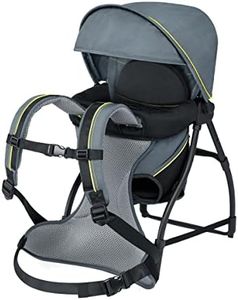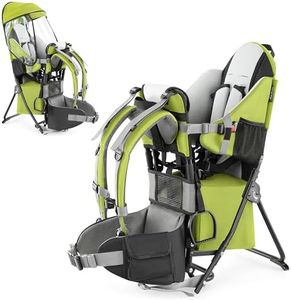We Use CookiesWe use cookies to enhance the security, performance,
functionality and for analytical and promotional activities. By continuing to browse this site you
are agreeing to our privacy policy
10 Best Child Backpack Carriers
From leading brands and best sellers available on the web.Buying Guide for the Best Child Backpack Carriers
When it comes to choosing a child backpack carrier, it’s important to think about safety, comfort—both for you and your child—and how you plan to use it. There’s a wide range of options, suitable for everything from short city strolls to long mountain hikes. Focus on how often and where you’ll be using the carrier, your child’s age and size, and your own comfort level. Taking a closer look at the main features and understanding how each might fit your needs will make it much easier to find the best carrier for your family.Weight CapacityThe weight capacity tells you the maximum weight the carrier can safely support. This usually includes both your child and any gear you pack. Lower-capacity carriers are often ideal for infants and smaller children, while higher-capacity options are designed for toddlers or growing children. Choose a carrier that not only supports your child’s current weight but also allows a bit of room for growth. Knowing your child’s weight can help you avoid purchasing a carrier that your child will outgrow quickly, or worse, one that is not safe for their size.
Fit and AdjustabilityFit and adjustability refer to how well the carrier can be tailored to the size and shape of the adult carrying it. Look for adjustable shoulder straps, hip belts, and torso lengths. Some carriers are highly adjustable to suit different body types, while others are more basic. If more than one adult will use the carrier, a highly adjustable model makes sharing easier and keeps everyone comfortable. Trying on the carrier, if possible, can help you ensure a good fit before committing.
Child Harness SystemThe harness system is what secures your child safely inside the carrier. Some are simple with two- or three-point systems, while others feature more elaborate five-point systems much like car seats. The more secure and padded the harness, the safer and more comfortable your child will be—especially if you’re tackling bumpy ground. For everyday short trips, a basic system may suffice, but for trail use or longer excursions, a robust harness adds peace of mind.
Support and PaddingSupport and padding include everything from the seat your child sits on, to headrests, to the padding for adult comfort around the shoulders and hips. Good padding reduces pressure points, making it possible to carry the load longer and keeping your child comfortable. Minimal padding is fine for quick trips, but if you’ll be out hiking or walking for hours, ergonomic support in key areas becomes crucial for both you and your child.
Storage CapacityStorage capacity looks at how much and how easily you can carry extras like diapers, water bottles, snacks, and other baby gear. Some carriers come with large, accessible pockets and compartments, while others keep it minimal. If you want the convenience of carrying everything in one bag without needing a separate backpack, opt for a model with more storage. For shorter outings or when you travel light, less storage might be preferable, keeping bulk and weight down.
Sun and Rain ProtectionMany carriers offer built-in or attachable sunshades and rain covers. These can be invaluable for protecting your child from harsh sun or an unexpected shower, especially if you plan to be outdoors often. Carriers with good weather protection are great for hiking and open-air activities, while simpler options might be just fine if your outings are mostly indoors or short.
Ease of Loading/UnloadingThis refers to how easy it is to get your child in and out of the carrier, and how stable the carrier is when you’re setting them down. Some carriers have kickstands or structured frames that help keep the carrier upright, which can be especially useful when you’re alone. If you’ll be putting your child in and out frequently, a carrier that’s simple and quick to load may save you a lot of hassle.
Weight and Size of CarrierThe overall weight and bulk of the carrier itself can matter a lot, especially if you’re planning long walks or need to travel with it. Heavier carriers offer more structure and features, but can become tiring over time. Lightweight carriers may lack some extras but keep things easy to carry and store. Think about your strength and how you’ll carry or transport the pack when it’s not in use.
